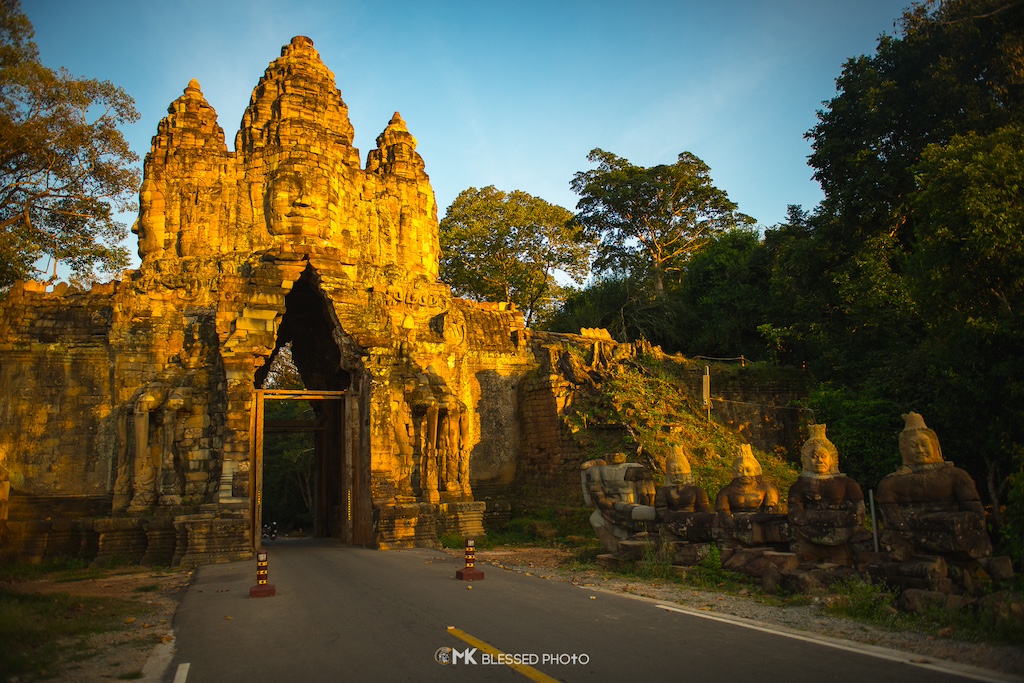(Photos by: Apsara National Authority)
North Gate of Angkor Thom: A Gateway to Ancient Mysteries and Splendor
The North Gate of Angkor Thom, often less frequented than its southern counterpart, offers a unique and serene experience for visitors exploring the ancient city of the Khmer Empire. Situated directly opposite the Royal Palace, this gate serves as a northern entrance to Angkor Thom, the last great capital of the Khmer Empire.
Like the other gates of Angkor Thom, the North Gate was built in the late 12th century under King Jayavarman VII. It shares the architectural grandeur and design features characteristic of the Bayon style, with massive stone faces gazing serenely in the cardinal directions. These faces are believed to represent the Bodhisattva Avalokiteshvara, echoing the king's compassionate vision.
The gate is adorned with intricate carvings and bas-reliefs, showcasing the finesse of Khmer artistry. The causeway leading to the gate is flanked by figures of gods and demons, similar to those at the South Gate, depicting the mythological 'Churning of the Ocean of Milk.' However, the North Gate offers a more tranquil setting, allowing visitors to appreciate these details in a quieter atmosphere.
One of the unique features of the North Gate is its relative tranquility compared to the other gates. This offers a more intimate glimpse into the historical and architectural significance of Angkor Thom. The gate's structure is remarkably well-preserved, providing an excellent example of ancient Khmer engineering and design.
Exploring the North Gate and its surroundings offers a deeper understanding of the grandeur and complexity of Angkor Thom. The gate not only served as a point of entry but also as a symbol of the city's spiritual and cosmic significance.
Major Sight Spots at the North Gate of Angkor Thom
Giant Stone Faces: Overlooking the gate in each cardinal direction.
Causeway Statues: The gods and demons lining the approach.
Intricate Carvings and Bas-reliefs: On the gate's walls and archways.
Nearby Attractions: Proximity to other significant sites within Angkor Thom.




